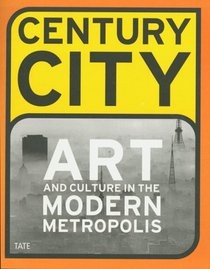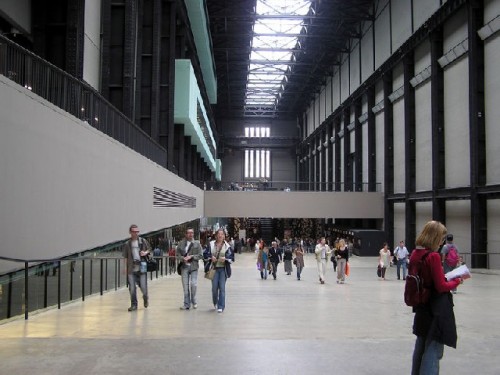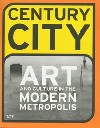Century City at Tate Modern
Seminal 2001 Exhibition
By: Charles Giuliano - Dec 17, 2011
April, 2001
Reports from the U.K: Two
Reposted from Maverick Arts
The container of Tate Modern, a former power plant located on the banks of the Thames River in London, is more spectacular than what it contains. Until quite recently, the Tate has been less than thorough in its systematic acquisition of 20th century art.
When push came to shove the Tate, by default, was mandated to expand its focus on British Art to become London's museum of record for Modern art. The result of this decision, Tate Modern, occupies a vast and awe inspiring space. The permanent collection it displays, however, is not so stunning. It features the standards of 20th Century British art from Francis Bacon, Lucian Freud, Henry Moore, to Dame Barbara Hepworth, and great strength in the Young British Artists.
There are a couple of Picassos including a landmark, "Weeping Woman." But too few examples, in areas where museums of modern art tend to be measured by their depth in School of Paris and European Modernism. Rather gamely there is a room of epic Beuys and another devoted to Guston paintings.
Given the rather spotty quality of its permanent collection, and emphasis on the British School, it is not surprising that Tate Modern’s first special exhibition, Century City, left us with mixed emotions.
This first effort combined vignettes of the entire vast range of 20th century art. The diverse elements seem orchestrated to culminate with and underscore the brilliance of the current generation of Young British Artists. This survey of global modernism comprised an odd but provocative array of world cities viewed at specific moments in time. It was produced by an array of distinguished curators and essayists focusing on specific cities in narrowly defined time frames.
These diverse topics consisted of: Bombay/ Mumbai, 1992-2001, by Geeta Kapur and Ashish Rajadhyaksha, Lagos, 1955-1970, by Okwui Enwezor and Olu Oguibe, London, 1990- 2001, by Emma Dexter, Moscow, 1916-1930, by Lutz Becker, New York, 1969-1974, by Donna De Salvo, Paris, 1905-1915, by Serge Fauchereau, Rio De Janiero, 1950-1964, by Paulo Venancio Filho, Tokyo, 1967-1973, by Reiko Tomii, and, Vienna, 1908-1918, by Richard Calvocoressi and Keith Hartley.
Just considering the diversity of these nine cities and cultures underscores the daunting complexity of installing a single cohesive exhibition. The challenge to the viewer was physically and emotionally overwhelming.
Some of the material was readily familiar, particularly Moscow, Vienna and Paris. Perhaps the strategy of including well known work and old ideas was to use that as a standard for evaluating more esoteric visual and cultural information.
While there is logic to this approach it might have been more challenging to see not the familiar Vienna of Freud, Kokoschka and Schiele, but the intriguing, Post WW11, Vienna Actionists, or the artists of contemporary Austria. Similarly, we might have seen less familiar Russian or French art.
In contrast to such well digested views of modernism, what to make of the more rarely discussed art of Lagos, Rio, Bombay and Tokyo.
And, how to explain or justify the segment on New York focused on the period 1969-1974, which seems to fall off the radar screen of great moments- abstract expressionism, pop, minimalism, neo expressionism, conceptualism, neo geo- in that biggest of apples.
In our heart and soul we wanted to find the exhibition of work from Lagos exciting. But, well, it just wasn’t. And, how does one deal with the mind boggling kitsch and gritty views of poverty in the work from Bombay. I’ll have to get back to you on that. Similarly, the section surveying Tokyo was challenging but included works by such well known artists as Yoko Ono, and Kusama Yayoi, which made it easier to absorb.
From a purely visual standpoint, the galleries dedicated to the non objective artists from Rio; Lygia Clark, Helio Oiticica, Sergio Camargo and Lygia Pape had the most powerful impact. I first encountered work by these artists in documenta X, organized by Catherine David, and later in the exhibition, Global Conceptualism, organized for the Queens Museum of Art by a team of curators. This movement of artists, set in the romantic, sensual era of Bossa Nova, is only now receiving international recognition.
While the exhibition resulted in a mixed and even chaotic experience the accompanying catalogue, and its brilliant essays, provided fascinating insights. It should become required reading.
The essays clarified the selection of these particular cities and periods of time. A common theme stated that creative activity occurred because of a confluence of social and political circumstances. There was a zeitgeist that motivated artists. The sum of the parts, and the chemistry of their interaction, was of greater significance than the individual artists.
This proves to be particularly true of the Young British Artists. At the moment of their emergence, Damien Hirst concluded that his fellow art students were doing better work than was being shown in London’s leading galleries. Also, there was a slim possibility that their work would be shown. He took it upon himself to find raw and cheap venues to organize shows. Similarly, the artists, Tracey Emin and Sarah Lucas, opened a store to sell their hand made craft objects. On weekends, The Shop hosted parties. These artists created their own scene, which eventually attracted media attention, and global recognition.
The essay by De Salvo is frank and brilliantly insightful about the apparent ambivalence of the period of New York art from 1969-1974. She states that it is a movement of art about which we haven’t really made up our mind. The period she discussed focuses on a number of women artists, Eva Hesse, Lynda Benglis, Hannah Wilkie, Adrian Piper, Nancy Graves, Mary Beth Edelson and Mary Miss.
The dominating theme appears to be the emergence of feminism but add to that the conceptual art of Fluxus, Vito Acconci and the urban sculptures hacked out of abandoned buildings by Gordon Matta Clark. Her essay focuses on the emergence of Soho as a center for artist lofts and the importance of Matta Clark’s artist run restaurant, Eat. One may readily draw parallels to the art run exhibitions and galleries of the Young British Artists, the music scene of Rio, the cafes of Paris and Vienna, and the political movements of Moscow, Lagos, Tokyo and Bombay.
Similarly, the essays devoted to Lagos by Enwezor and Oguibe prove to be stronger and more fascinating than the actual works. It is also apparent, in the art movements of Lagos, that there was greater strength in music and theater as well as important journals.
Developments in music and film, particularly in non European centers of activity, are more readily assimilated than the visual culture. Visual artists, in particular, often need to be involved in a global mainstream of information and resources in order to achieve a level of sophisticated and original production.
While unique and important developments in the music of Lagos and Rio, for example, instantaneously found a global audience, it has taken a much longer time to evaluate the achievements of their visual culture. Similarly, the Western audience is more readily familiar with the film produced in Bombay and Tokyo than their art.
Taken as a whole, Century City was a bold but daunting mission statement for Tate Modern. As a template for future activity it displayed both a commitment to issues of historic modernism as well as to presenting the unassimilated and challenging art of our time. If the Tate has some catching up to do this is certainly a dramatic move in the right direction. It produced an exhibition and catalogue that will generate years of challenging debate.




